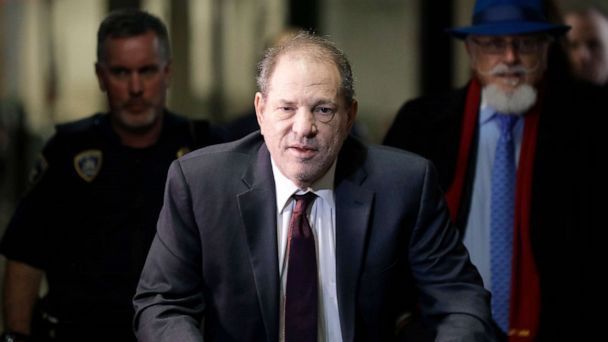I will be blunt about Chicago.
The city is magnificent. There has always been a soul to the city. The city will undoubtedly unite over our own achievements, like the Bulls reign in the 90s.
However, Chicago is a city that will also turn on itself in an insidious manner and destroy itself with crime, violence, shootings, and riots. It is without a doubt a dangerous city. I am no stranger to this city’s violence. The recent riots and destruction in Chicago pain me and have inspired me to tell this story.
I am a White, middle-class woman, born into White privilege. I have shame and confusion surrounding my White privilege. I acknowledge my White privilege with the knowledge that I myself and generations before me are hard workers and life has not always been kind, nor easy, as life is. But I am clearly aware that it was easier for us than our Black counterparts.
It confuses and angers me that because of my race, I am lumped in with the belief that Black men are our assailants. My experiences speak differently. I feel shame because I see, hear, and participate in the events right now of the destruction of the old racial paradigm and the formation of a new anti-racist paradigm, but I also want to say, “me too.”
I want to say, “me too” as a woman coming from White privilege—I too hold injustice, anger, and fear toward the White male. I feel shame because I am not Black, but I too fear White male aggression. I am of White privilege, and I too have experienced the injustice and fear the system. This is my story of how my own experiences growing up in the inner city of Chicago have shaped my perceptions of race.
At the age of 13 in 1989, I was a victim of aggravated assault in broad daylight in a predominantly White inner-city neighborhood of Chicago, Illinois. I was returning home from picking up my lunch from a nearby restaurant and a large White man came out of the alley and wrapped something thin and clear around my neck and tried to strangle me.
My flight and fight instincts worked perfectly as I fought with all of my might, kicking and screaming loudly to get the large (he must have been close to 200 pounds) man off of me. He had tackled me, pinned me to the ground with the device he was using as a weapon still around my neck. After what seemed an eternity of struggle and pure fear feeling his weight on my body, he stood up and vanished.
I ran down the block screaming frantically, searching for help. Neither of my parents were home at the time, and a neighbor took me in. We called my father at work and then the police. The police and my father arrived in tandem which must have been about 20 minutes later. I rode in the police car around the neighborhood with my father looking for my offender. He was nowhere to be found.
Months later, two detectives came to my home and showed me pictures of men who had been arrested asking me to identify my offender. I did, to the best of my ability. The detectives notified us shortly thereafter that the offender was arrested after he committed the same style assault on another man, just a few blocks away. We were notified that the offender was charged with aggravated assault and was found to have a mental illness. The offender was sent to a mental institution for a year and a half.
I often wondered if this would have been the sentence if my perpetrator was a Black man. If a Black man in a predominantly White neighborhood in Chicago had attacked a young White girl, would he have only been sentenced to a year and a half in a mental institution?
This was not my last encounter with violence and fear growing up in the city of Chicago. A friend of ours in our circle of friends was shot and killed two alleyways away from where I lived when I was in high school. I remember more than twice, White men in cars slowing when I was walking down a street to follow me. I had learned by then to abruptly turn around and walk in the other direction to seek safety. I learned to hide myself, to tuck in my long hair so I wouldn’t attract the attention of the White male.
I attended a diverse private school on the South Side of Chicago for high school. My three best friends were Indian, Icelandic, and Black/Mexican. The school was also in a bubble, Hyde Park. Surrounding the small proximity of Hyde Park was the South Side of Chicago.
Known for gangs, carjacking, and random shootings. It was a predominantly Black neighborhood. We had an open campus in high school and would often leave Hyde Park and go into the South Side to purchase the delicious and famous Harold’s Fried Chicken. At night we would drive to 43rd street to the CheckerBoard Lounge and listen to our favorite band, Vance Kelly and the Backstreet Blues Brothers. Oftentimes we would go to liquor stores in the South Side to purchase booze (in Chicago at that time you could pretty much buy alcohol underage in any neighborhood, you just needed to know the store).
In the stores on the South Side, we would buy the booze through a bulletproof glass window. I would drive or walk to these places by myself, or with friends. Never once did I feel unsafe, never once was I attacked or caught in the crossfire of a gang-related incident. I felt safe. I recognize that Black people do not feel safe in White neighborhoods because they are perceived as a threat.
However, I feel safe in predominantly Black neighborhoods; I believe I am a minority in this feeling.
These experiences have forever shaped my perception of what a perpetrator looks like. For me, when I envision an attacker, robber, child abductor, rapist, etc., I envision a White male. Recently a friend and I were talking about overt racism and how she notices the subtle changes of White women as they clutch their purses tighter when her husband, who is Haitian, enters the elevator. Exactly how underrepresented are White aggressors in the United States?
The Chicago Police Department’s 2018 Annual Report states that African Americans represented 2017 (74 percent) and 2018 (73 percent) of arrests in Chicago, while Whites only represented eight percent of arrests in both years. In the 1989 Chicago Police Department Annual Report 2,848 arrests were made of White aggravated assault offenders and 7,386 Black offenders of aggravated assault were arrested.
Yet, data extracted from the Sourcebook of Criminal Justice Statistics (Maguire & Pastore, 1997) state that 70 percent of all reported aggravated assault victims in 1995 in the United States were White offenders with White victims and only 13 percent of all episodes were Black offenders on Black victims and Black offenders on White victims.
A staggering two percent of all episodes were White offenders on Black victims. Again, these are reported measures, making one wonder how many Black victims actually report on their White offenders.
What these numbers do indicate is that Black offenders are usually overrepresented in reported aggravated assault at 274 percent greater than their actual representation in the general population (Pallone and Hennessy, 2000). Overall episodes of criminal aggression by White offenders account for more than 73 percent of all aggressive crimes, where Black-initiated aggressive crimes account for only 27 percent of all aggressive crimes.
This data indicates that White-initiated criminal aggression exceeds Black-initiated criminal aggression, suggesting that racial profiling is both morally and statistically inaccurate (Pallone and Hennessy, 2000). Whites fear criminal aggression by Blacks, but are nearly three times as likely to be victims of their own race than of another (Pallone and Hennessy, 2000).
My experiences have taught me how to grow eyes in the back of my head and have razor-sharp awareness when walking around any city. For a year after my attack, I struggled walking anywhere by myself. I learned to leave one ear open when listening to headphones walking down the street, to always be on guard and aware of the diversity of my surroundings. I will always know who is in front of me when walking and who is behind me. I avoid alleys and unlit streets, day and night. If there is a White male and a Black male who both look suspicious in the street, I will be aware of both, but it is the White male I will clutch my purse closer to me as I pass.
It angers me that the man who attacked me and tried to strangle me by wrapping something around my neck only served a year and a half in a mental institution. I was mindful when I was 14 and a half that my perpetrator walked the streets of Chicago again.
The injustice of Black men in this country angers me as their White counterparts commit crimes of the same degree and are punished unequally.
It angers me that racial profiling has the wrong race tagged as the aggressor, both statistically and morally.
It angers me that because of my race, it is assumed that I think the Black man is the aggressor, when both my experience and statistics speak differently.
It angers me that other White women fear Black males as perpetrators when statistically they are more likely to be attacked by a White male than a Black male.
Hello America, why do we continue to cage ourselves in the White supremacist narrative, despite the evidence and data that the White male is the predominant aggressor?
Fast-forward 30 years, I have long since reclaimed my independence to walk in the city streets now, yet I will always be on guard. Sadly, we find ourselves once again witnessing and experiencing as a city, the reopening of these unhealed wounds of racism.
The Chicago I love so much yet again turns on itself because it is not healed. We have all been drinking the “everything is fine” Kool-Aid for too long, and now the injustice bleeds through the city’s streets in the form of destruction.
As a mother of two young girls, I am acutely aware and often triggered into anxiety in situations where the three of us are exposed to nondiverse crowds. White people are criminals too.
As a White woman, I too fear White aggression. I move forward now with a new set of lenses. I will not raise them to feel shame for their White privilege; I will teach them awareness, acceptance, and communication on what is truth.
I want to pass to my daughters to trust themselves and to be aware that danger lies in any skin tone. I will guide them to trust their own instincts and awareness to protect themselves, instead of racism.
~


 Share on bsky
Share on bsky





Read 4 comments and reply